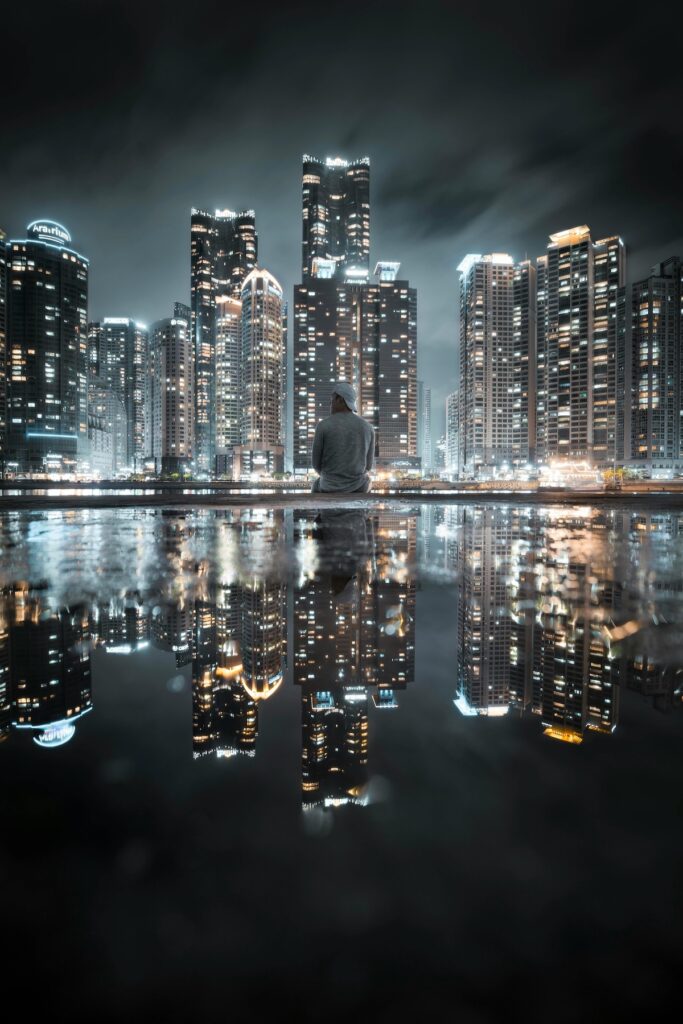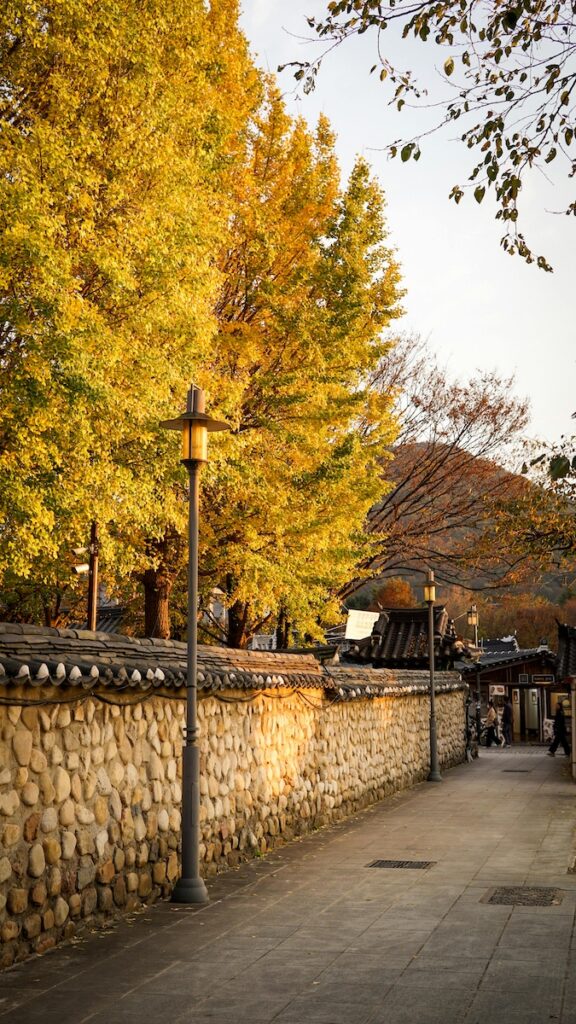Introduction: Why Seoul’s Palaces Matter
For visitors to South Korea, Seoul’s modern skyline often takes the spotlight. Yet hidden among the skyscrapers are magnificent reminders of Korea’s royal past — the Five Grand Palaces built during the Joseon Dynasty (1392–1897). These palaces are not just historical sites; they are living cultural landmarks where tradition meets modern life.
From spectacular night openings to scenes immortalized in K-dramas and movies, Seoul’s palaces continue to fascinate both locals and foreigners. This guide will help you explore each of the five palaces — Gyeongbokgung, Changdeokgung, Changgyeonggung, Deoksugung, and Gyeonghuigung — highlighting their history, unique attractions, seasonal events, and the best spots for photos.
1. Gyeongbokgung Palace (경복궁)
Historical Background
- Built in 1395, just three years after the Joseon Dynasty was founded.
- Served as the main royal palace and political center for centuries.
- Destroyed during the Japanese invasions (1592–1598), later rebuilt in the 19th century.
Cultural & Media Appearances
- Featured in numerous K-dramas such as Moon Embracing the Sun, Jewel in the Palace (Dae Jang Geum), and variety shows like Running Man.
- Frequently used in documentaries about Korean history.
Night Opening (야간개장)
- Special night openings usually happen spring (April–May) and autumn (September–October).
- Tickets are limited (often sell out within minutes on websites like Interpark).
- Foreign visitors can often buy tickets onsite with a valid passport.
Highlights & Photo Spots
- Geunjeongjeon Hall: The main throne hall, symbol of royal authority.
- Gwanghwamun Gate: Iconic entrance, one of Seoul’s most photographed landmarks.
- Changing of the Guard Ceremony: Colorful re-enactment held twice daily.
- Best photo time: Sunset with the mountains behind the palace.

2. Changdeokgung Palace (창덕궁)
Historical Background
- Constructed in 1405 as a secondary palace but later became the most favored residence of many Joseon kings.
- UNESCO World Heritage Site since 1997.
- Known for its harmonious integration with nature.
Cultural & Media Appearances
- The palace and its Secret Garden (후원, Huwon) appear in period dramas like Dong Yi and films focusing on royal intrigue.
- The Secret Garden has been praised internationally as one of the most beautiful palace gardens in Asia.
Night Opening
- Occasionally included in moonlight tour programs.
- The Moonlight Tour (달빛기행) includes traditional performances, tea ceremonies, and guided tours through illuminated palace grounds.
Highlights & Photo Spots
- Secret Garden (Huwon): Over 32 hectares of landscaped gardens, pavilions, lotus ponds.
- Buyongji Pond: Famous for mirror-like water reflecting pavilions.
- Best photo time: Autumn foliage or spring cherry blossoms.
3. Changgyeonggung Palace (창경궁)
Historical Background
- Built in 1483 by King Seongjong for queens and concubines.
- Known as a “residential palace,” more intimate compared to Gyeongbokgung.
- Suffered damage during the colonial era when it was turned into a zoo and botanical garden.
Cultural & Media Appearances
- Featured in dramas such as King and I and Empress Myeongseong.
- Famous for its night illuminations that give the palace a romantic atmosphere.
Night Opening
- Changgyeonggung Moonlight Tours are popular, often accompanied by music and storytelling.
- Spring and autumn sessions sell out quickly.
Highlights & Photo Spots
- Honghwamun Gate: Main gate, especially photogenic at night.
- Okcheongjo Pavilion: Scenic pavilion over a small pond.
- Spring cherry blossoms create one of the most romantic palace views in Seoul.
4. Deoksugung Palace (덕수궁)
Historical Background
- Originally a prince’s residence, became a royal palace after the Imjin War.
- Known for its mix of Western and Korean architectural styles.
- In the early 20th century, it became the residence of Emperor Gojong, the last monarch of the Korean Empire.
Cultural & Media Appearances
- Famous for its Deoksugung Stone Wall Road (덕수궁 돌담길), a backdrop in countless dramas and movies.
- Appeared in Goblin (Guardian: The Lonely and Great God), one of Korea’s most iconic K-dramas.
Night Opening
- Deoksugung is one of the few palaces open year-round in the evenings.
- Ideal for after-work visits in downtown Seoul.
Highlights & Photo Spots
- Junghwajeon Hall: Main throne hall.
- Seokjojeon Hall: Neo-classical Western-style building, houses a museum today.
- Stone Wall Road: Romantic walking path, especially in autumn.
5. Gyeonghuigung Palace (경희궁)
Historical Background
- Constructed in the early 1600s as a secondary palace.
- Known as the “West Palace” due to its location.
- Much of it was lost during colonial times, but parts remain and are open to visitors for free.
Cultural & Media Appearances
- Less commonly featured in media, but often used for historical re-enactments.
- Provides a quieter, less crowded palace experience.
Night Opening
- No regular night tours, but sometimes used for special cultural events.
Highlights & Photo Spots
- Heunghwamun Gate: Reconstructed main gate.
- Seosomun Park nearby offers peaceful walking areas.
- Great for travelers seeking hidden gems.
Seasonal Festivals & Events Across the Palaces
- Royal Guard Changing Ceremony (Gyeongbokgung, Deoksugung): Free to watch, held daily.
- Moonlight Tours (Changdeokgung, Changgyeonggung): Special ticketed night events.
- Cultural Performances: Traditional Korean music, dance, and re-enactments often scheduled during festivals.
- Palace Stays & Hanbok Rentals: Visitors can rent hanbok (traditional Korean clothing) nearby and enter palaces free of charge when wearing it.
Practical Tips for Visitors
- Opening Hours: Typically 9:00 AM – 6:00 PM (with seasonal variations).
- Admission Fees: Around 3,000–5,000 KRW per palace.
- Integrated Ticket: A combined ticket (₩10,000) covers four major palaces plus Jongmyo Shrine.
- Guided Tours: Free English tours available at fixed times.
- Best Time to Visit: Spring (cherry blossoms) and autumn (fall foliage).
Conclusion: Palaces as Living History
Seoul’s palaces are not just tourist attractions; they are living bridges between Korea’s royal past and its vibrant present. From Gyeongbokgung’s grand ceremonies to Changdeokgung’s serene gardens, each palace tells a unique story.
For global fans of K-dramas, Korean history, or just stunning photography, visiting the palaces is a must-do experience. And if you time your trip with a night opening or seasonal festival, you’ll see these royal grounds in an entirely new light.
Seoul may be a modern megacity, but in its palaces, you’ll discover the heartbeat of Korea’s cultural identity.

